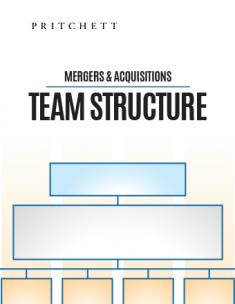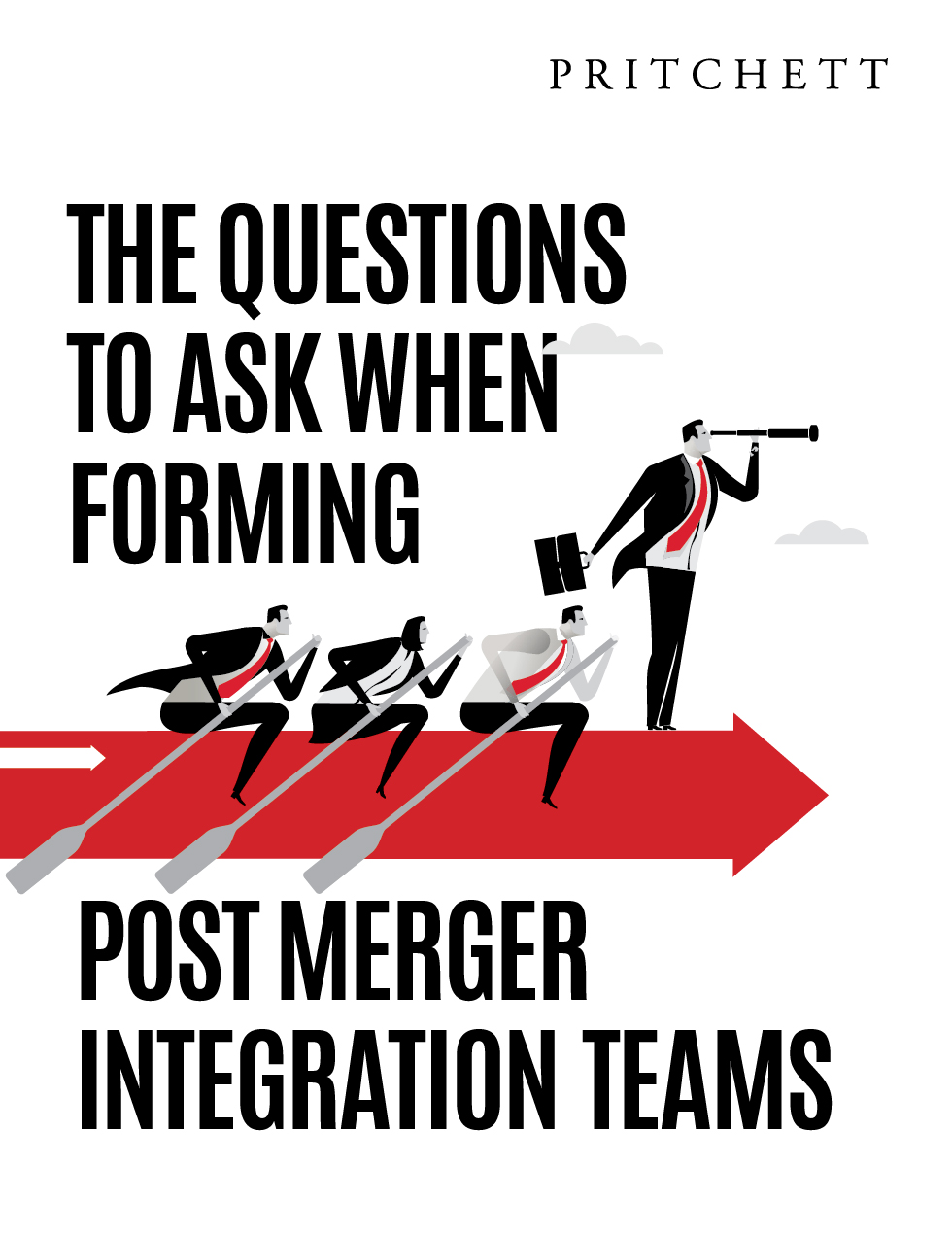An efficient and typical M&A team structure for an integration consists of three different layers: a steering committee, an Integration Management Office (IMO), and a variety of task-force teams. Assuming that the appropriate people (in terms of personality, management ability, technical talent, and time to devote to the process) are assigned to these slots, the group is in a position to do a good job of integration management.
Typically, the steering committee is small, consisting of two to four individuals, all of whom are senior level people. The focus of this group is to provide direction to the integration effort as it relates to strategy and policy. While not committed full time to the process, this group should meet on a regularly scheduled basis to approve integration plans and review progress. If it is a true merger situation, the group may benefit from equally balanced representation from the two organizations. If it’s better defined as an acquisition situation, the steering committee may have a majority, or even all of its members, coming from the acquirer. But representation from both organizations helps ensure that key financial, operational, or cultural aspects are not overlooked during the integration process.
If it is a true merger situation, the group may benefit from equally balanced representation from the two organizations. If it’s better defined as an acquisition situation, the steering committee may have a majority, or even all of its members, coming from the acquirer. But representation from both organizations helps ensure that key financial, operational, or cultural aspects are not overlooked during the integration process.
Executive sponsorship is critical to the success of the integration. As the integration moves forward, there will be resistance from both individuals and departments. This opposition may result from a conflict with some operating priority (“You’re interfering with our annual planning cycle.”) or protection of the status quo (“It’s always been done this way, and we don’t need to change it now.”).
Senior-level personnel who serve on the steering committee may be the only ones with the necessary clout to get past these obstacles. The steering committee will also need to act as the final decision point for resource allocation and prioritizing of the recommended initiatives.
The IMO, consisting of some three to five full-time people, is the real workhorse responsible for driving the integration forward and keeping good project-management discipline in place. One member of this team should be designated as the integration manager and given the overall responsibility for the project’s progress. As a whole, this team’s purpose is to provide the guidance and day-to-day decision making that will allow the integration process to move forward on a timely basis. This group also should include members of both organizations. A fairly balanced representation generally fosters better buy-in from the people in the two organizations while also improving the odds that plans for integration can be implemented effectively.
The third level of the project management structure is comprised of a number of task-force teams. These units ordinarily are comprised of three to eight people and are formed to address specific organizational issues needing attention because of the merger/acquisition event. They can be either resource-driven, such as finance, human resources, information technology, and so on, or operations driven according to business unit, product line, or perhaps geographic location.
The resource-driven teams will have tasks of their own to complete but also will need to support the operating groups in the completion of their respective tasks. The task-force teams commonly have individuals working both full-time and part-time on the integration and should have one person designated as the team leader.
The assortment of task-force teams take their marching orders from, and report to, the IMO. In turn, the IMO is ultimately accountable to the steering committee. Under the day-to-day direction of the integration manager, the merger team has responsibility for coordinating all of the analyses and recommendations for action that the task-force teams generate.
To learn about PRITCHETT’s M&A integration consulting services or our Merger Integration Certification Workshop, call +1.214.239.9600 or +44.203.936.2220


.jpg)


